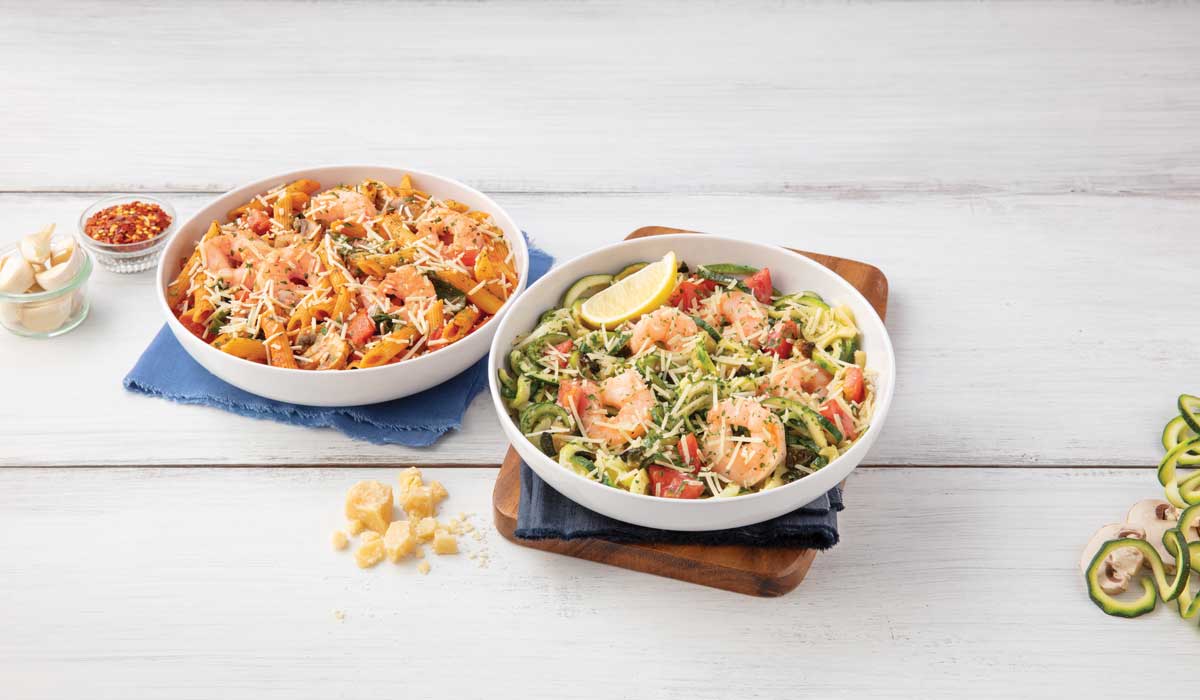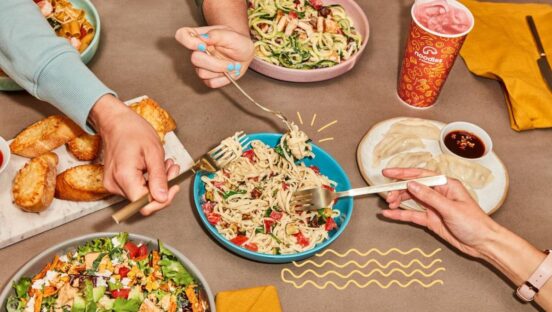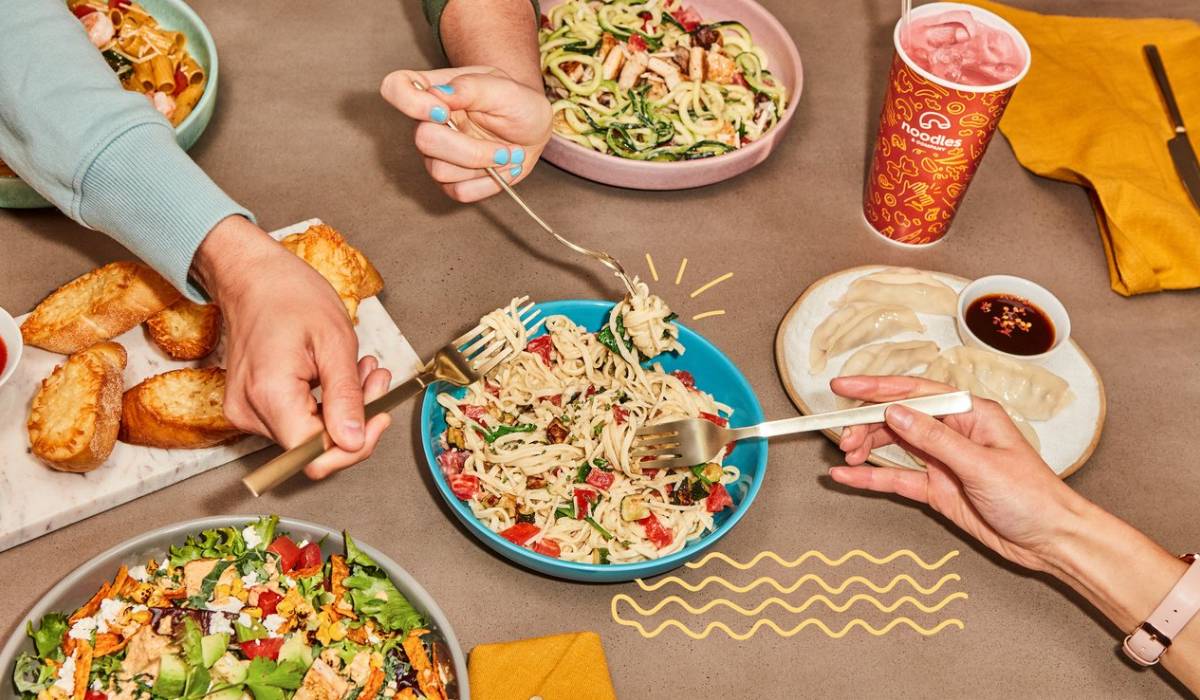There was an elephant in Noodles & Company’s boardroom. And this issue kept expanding as consumer preferences shifted, especially as it pertains to fast casual. Counter-service brands could no longer count on the notion guests trade convenience for health and quality. In Noodles’ case, it was an even narrower issue: The brand needed a low-carb option.
At its core, this was the pretense for the chain’s May 2018 Zoodles launch, which remains one of the most successful product rollouts in recent quick-service history. But we’re now more than a year removed and Noodles is ready to lap the results. In order to not be buried, comparatively, by its own success, the company is kicking innovation into second gear, chief executive Dave Boennighausen during the company’s May 9 conference call to discuss first-quarter results.
After a slow run due to weather, the Broomfield, Colorado-based company gained momentum toward the end of Q1, finishing the period with 3 percent same-store sales growth, year-over-year. Traffic was slightly negative throughout the period but turned positive during the final weeks, Boennighausen said. And that trend continued into Q2. In response, 459-unit Noodles lifted its comps guidance for the year to 3–5 percent from 2–4 percent. Q1’s results comprised of 2.5 percent price and mix shift of just under 2 percent, along with the negative traffic.
The company’s revenue decreased 0.4 percent to $110 million due to a lower store count, and Noodles swung a net loss of $1.9 million, which was less than the year-ago figure of $3.6 million.
Boennighausen said the traffic surge proved the brand’s stressors were short-term, and that it’s holistic changes position Noodles for “sustained, enduring growth.”
Yet the company couldn’t just flip one switch and expect the lights to stay on forever. Noodles’ had to dive deeper into its reenergized “better-for-you” standing and keep pulsing relevant additions.
On May 8, the company expanded the zucchini noodle lineup with two new offerings—Zucchini & Asparagus with Lemon Sauce and Zucchetti in White Wine Garlic Sauce with Balsamic Chicken.
“Zucchetti” refers to a 50/50 combination of zucchini noodles and spaghetti noodles. Additionally, Noodles introduced a gluten-friendly pipette shell, which like the Zoodles, can be substituted into any dish for $1.
There were other changes, too. The company added a personalized nutritional calculator to its website to help customers create dishes according to dietary preferences, like keto and paleo. And then it added new menuboards systemwide, with help from consulting pioneer King-Casey and Revenue Management Solutions. They feature four main categories: Classic Noodles, World Famous Macs, Asian Noodles, and Zoodles and Other Noodles. There’s also a Signature Flavors callout that spotlights best-selling dishes, offering an easy entry point for new guests.
Another change: Noodles’ new menuboard allows customers to “Make it a Meal” by adding a side and regular drink to their order for $3.25–$3.50.

The menuboards focus on lowering the amount of selling points, thus making it an easier ordering experience for new and lapsed users—who have returned in mass since the Zoodles launch buzzed awareness. Upselling, improving units per transaction, and highlighting the Zoodles were other key goals.
Pushing a healthy brand positioning makes sense for Noodles. The company engaged Wakefield Research to survey customers and found that 52 percent of people want to eat more vegetables this summer and make steps toward a healthier lifestyle. However, 53 percent feel healthy habits often fall apart when dining out.
The chain saw a clear chance to dive into that preference gap. And that runway has legs. “Where we do still see opportunity in terms of what the guests are telling us they’d like, they do like the plant-based alternatives,” Boennighausen said.
Noodles is testing items along the lines of cauliflower, he added, and has further innovation plans in tests for later in 2019 and beyond.
Where more opportunity lies
As culinary options widen for Noodles, so do convenience initiatives. Off-premises sales grew to 56 percent of sales during Q1—a sizable 500-basis points increase year-over-year.
One thing that’s interesting about the growth: of the 56 percent, 22 percent is either quick pickup or delivery (another 2 percent or so is catering). That means more than 30 percent of Noodles’ guests are still coming into the restaurant, waiting in line, going through the ordering process, and then waiting another four to five minutes, Boennighausen said.
“That’s just not ideal,” he added.
Boennighausen said there’s “tremendous opportunity” to optimize the experience for that third of customers. The company’s new app is helping.
Digital ordering, inclusive of delivery, lifted 63 percent, year-over-year, in Q1 and accounted for 22 percent of total sales. Exclusive of delivery, digital ordering sales and quick pickup upped 32 percent from the prior year and made up 17 percent of sales.
In Q4 of this year, Boennighausen said, Noodles will relaunch its digital platform with a nod to the previously mentioned issue. It will focus on the ordering process as well as Noodles’ rewards program. “While we expect this initiative will further reduce friction for our guests, we also believe that it will be transformative in increasing our capabilities to engage with guests from a marketing perspective in a more personalized, targeted and relationship-driven manner,” he said.
“We believe this is a brand, given our unique capabilities to meet that off-premises occasion and our unique capabilities with the younger generation, a more technology savvy generation where we skew from a guest perspective,” Boennighausen added. “We believe we should have a best-in-class type guest engagement platform on par with a company like a Starbucks.”
Separate from its internal digital ordering platforms, Noodles’ third-party delivery efforts accounted for 5 percent of sales in Q1 versus 3.1 percent this past quarter.
Even with the growth and accretive earnings benefits, though, Boennighausen said the process comes with additional costs. As a result, Noodles is testing select pricing strategies regarding delivery to determine how it can mitigate the impact of fees on its margin profile.
Additionally, Noodles anticipates relaunching its catering program in 2020. Currently, the platform measures less than 2 percent of total sales.







